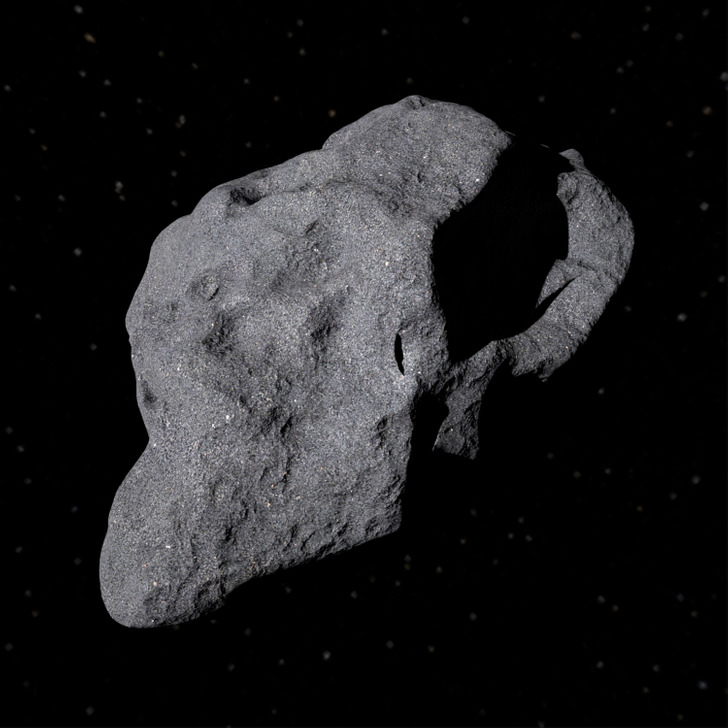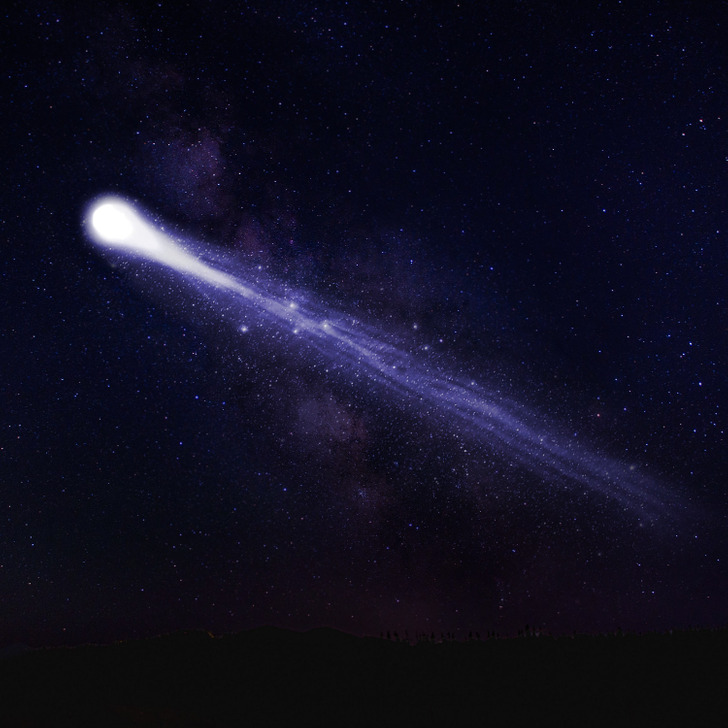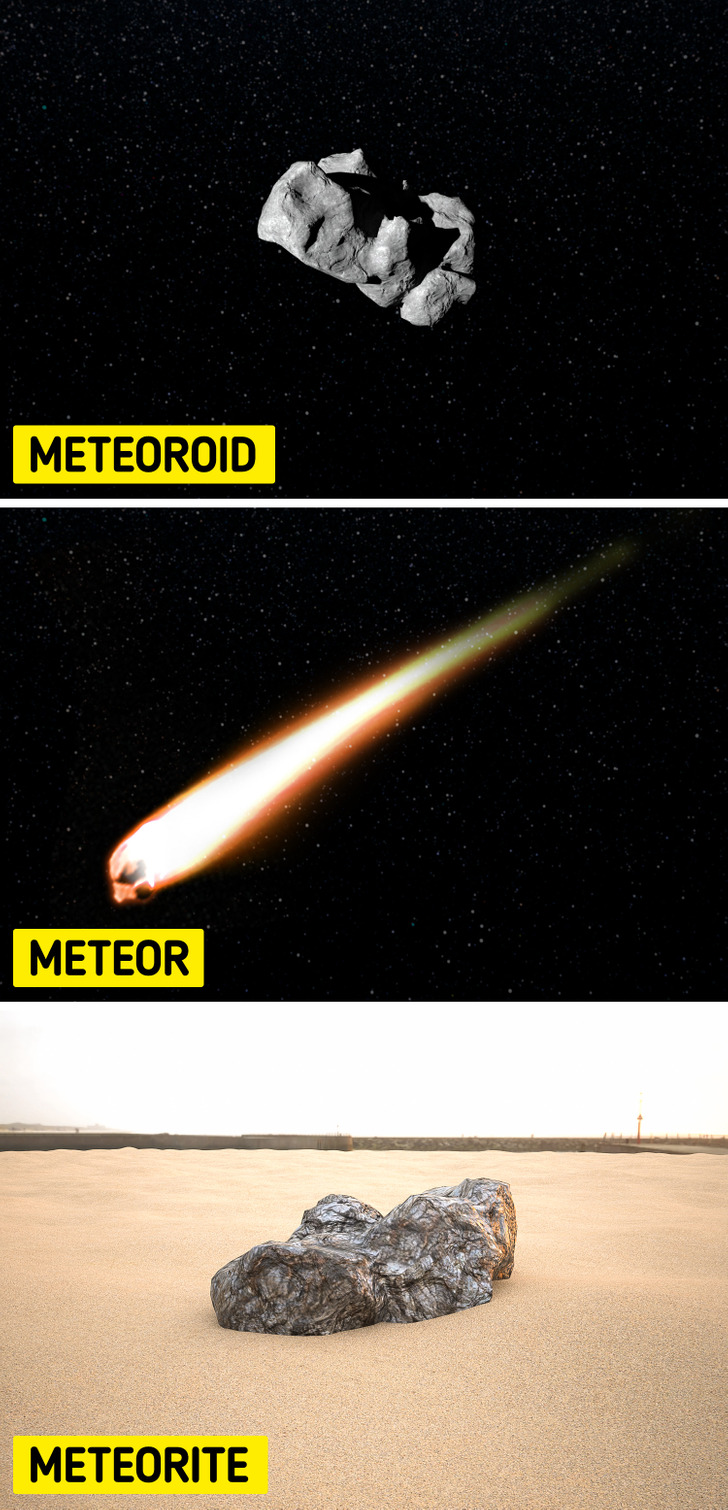A Guide to Celestial Bodies
Outer space is full of mystery. Even the names of celestial bodies can confuse us since we can’t always tell the difference between their various forms.
5-Minute Crafts would like to explain what the differences between an asteroid and comet are, along with a meteor and meteorite.
Asteroid

Asteroids are rocky bodies that remained in space after the formation of the solar system, which took place about 4.6 billion years ago. Although asteroids also orbit the sun, they are not big enough to be classified as planets. They can be round, jagged, or irregular in shape, reach several miles in diameter, or can be as small as a pebble.
Most of the asteroids orbiting our sun are located in the asteroid belt between Mars and Jupiter. To date, NASA knows of more than 1 million asteroids.
Comet

Comets are large celestial objects made of ice and gas that revolve around the sun. They emerged about 4.6 billion years ago as leftovers from the formation of the solar system.
Most often, comets are found outside the solar system, but sometimes the gravity of a planet or star can pull them out of their usual orbits. At these moments, the comet changes its usual trajectory and heads toward the sun. It goes around the sun, following a path that looks like a long stretched oval, and then it returns to its usual orbit.
Comet nuclei, composed of loose collections of ice, dust, and small rocky particles, can have a diameter measuring from several hundred yards to dozens of miles. When a comet is in its usual orbit, the nucleus is virtually all it has. But as soon as the comet begins to move toward the sun, its nucleus gradually heats up, and the ice turns into gas. Gas and dust form a bright cloud around the nucleus, which is called the coma.
When the comet moves, gas and dust continue to be released from the nucleus and, under sunlight, turn into a bright tail that can stretch for millions of miles.
Meteoroid, meteor, and meteorite

Asteroids are not isolated from each other. Sometimes, they collide and break into pieces. Asteroid particles formed during such a collision are called meteoroids. Also, meteoroids can come from comets.
If a meteoroid comes close enough to Earth and enters its atmosphere, it gets heated by air molecules in the upper atmosphere, evaporates, and turns into a meteor, or a streak of light in the sky. This is what we usually call a “shooting star.”
Sometimes meteoroids don’t completely evaporate in the Earth’s atmosphere but continue their journey and fall on the surface of our planet. These objects are called meteorites. In fact, meteorites are particles of asteroids that survive their trip through the atmosphere and land on the Earth’s surface.